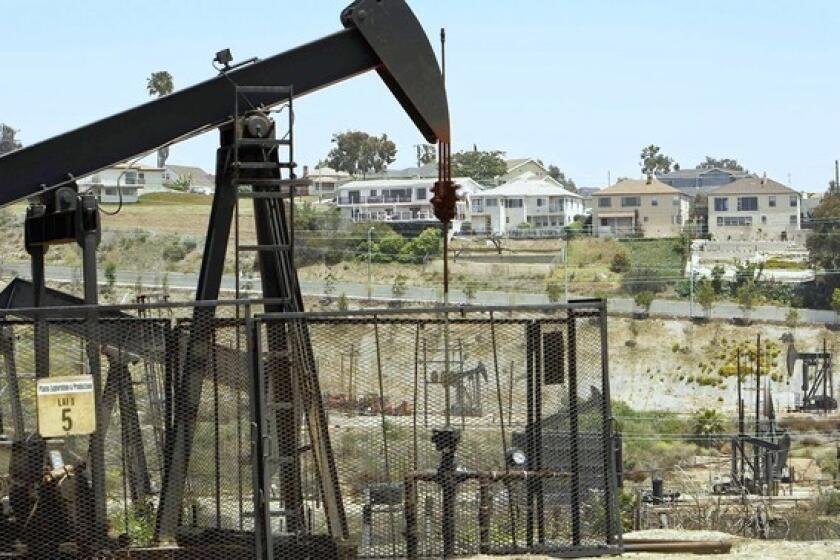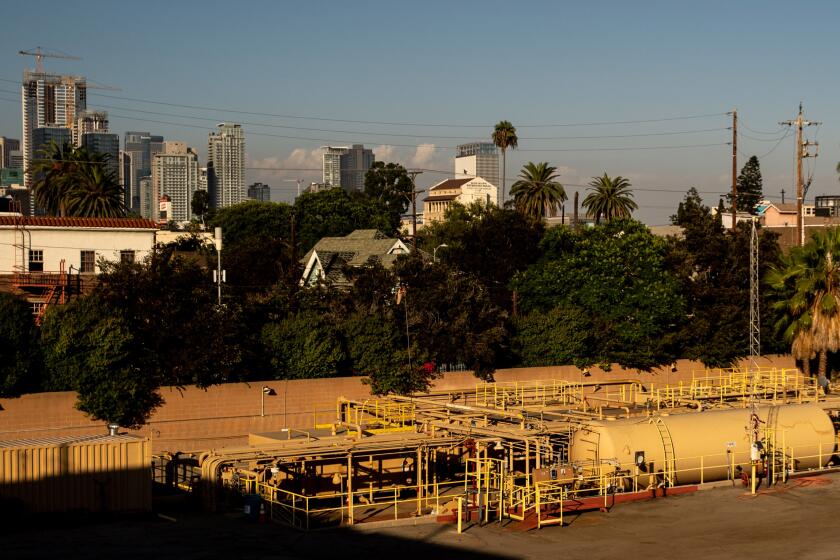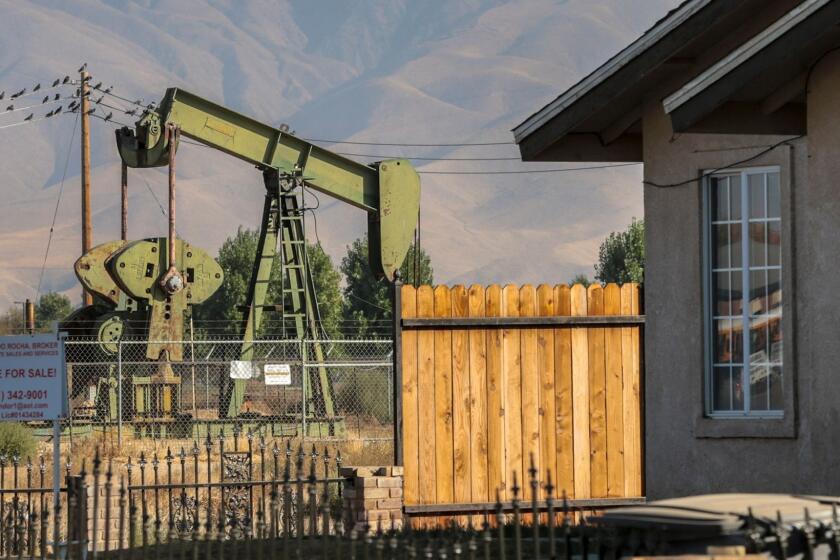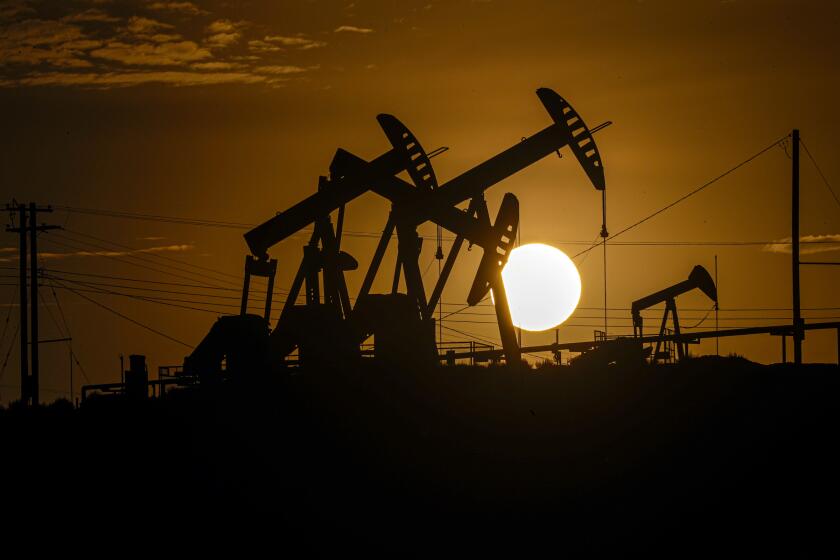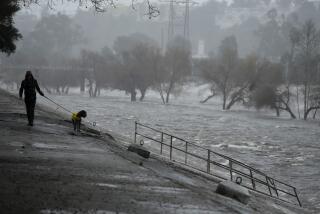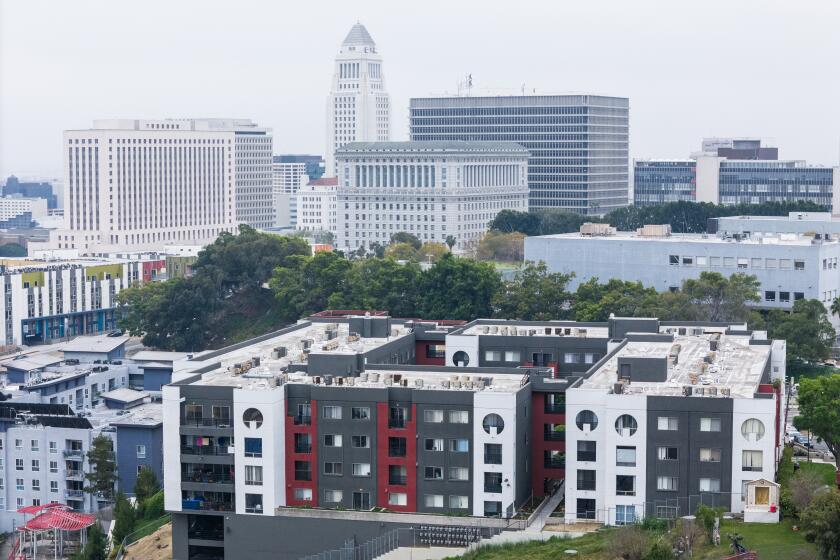In historic move, Los Angeles bans new oil wells, phases out existing ones
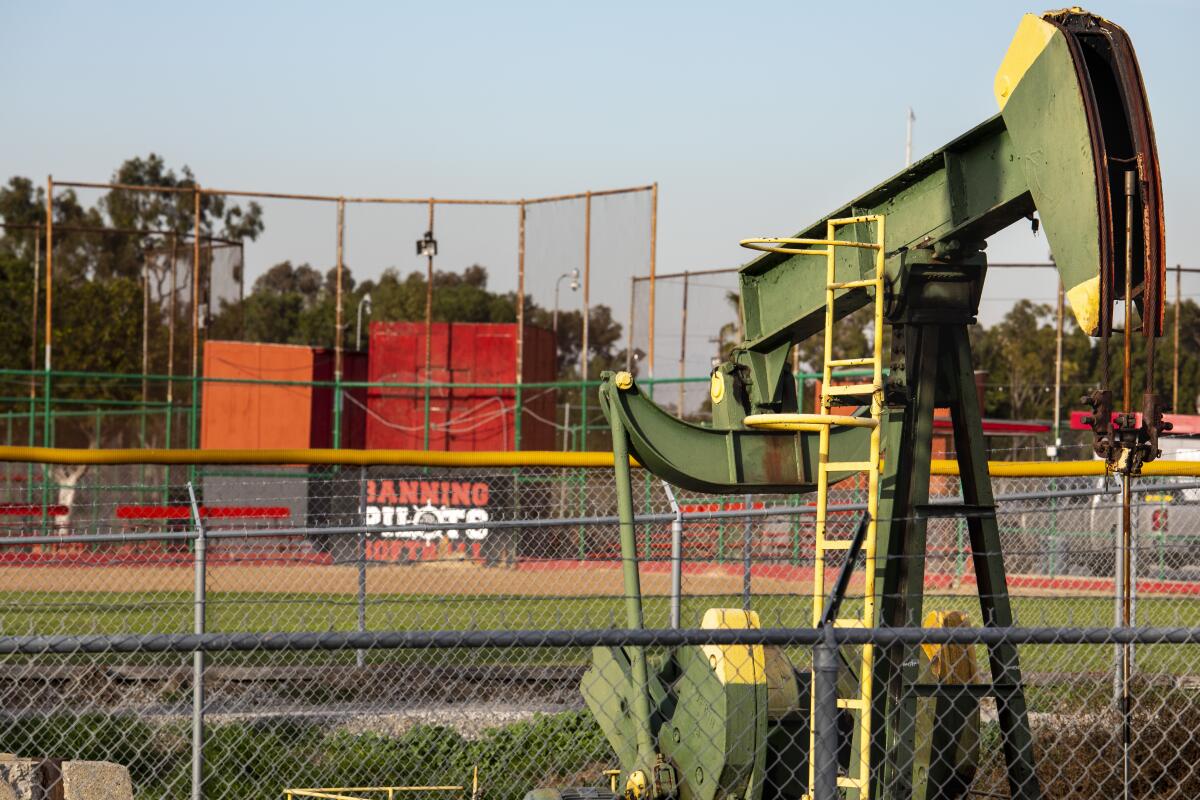
The Los Angeles City Council voted Friday to phase out all oil drilling in L.A. and ban new wells, a historic move in a city that was built by a once-booming petroleum industry and whose residents have suffered with decades of environmental consequences as a result.
In a 12-0 vote, the council approved a new ordinance that immediately bans new oil and gas extraction and requires that all existing oil and gas extractions stop production within 20 years.
The move is opposed by the oil industry, whose leaders warned city officials that the phase-out will hurt the city’s finances and make L.A. more dependent on foreign oil.
Along La Cienega near Inglewood. At Beverly Hills High School. In people’s backyards in Echo Park. Atop Signal Hill. Oil wells are everywhere in and around L.A. You sure don’t see that in Paris (France).
According to the city’s planning department, Los Angeles has 26 oil and gas fields and more than 5,000 oil and gas wells. Some of the wells are active, while others are idle.
Many wells are found in the Wilmington and harbor areas, but also operate in downtown, West Los Angeles, South Los Angeles, and the northwest San Fernando Valley, according to the city’s planning department.
Oil wells are known to emit likely carcinogens including benzene and formaldehyde, and living near wells is linked to health problems including respiratory issues and preterm births, studies have found.
MAP: Check out oil wells in your neighborhood
Environmental justice activists charge that low-income communities of color are particularly affected by the wells and associated health problems.
The Los Angeles City Council votes to take steps to phase out oil production in the city, a move celebrated by environmentalists.
Stand Together Against Neighborhood Drilling, or STAND-L.A., a group of community groups that helped spearhead the law, said Friday in a statement that “Black, Latinx and other communities of color currently living near polluting oil wells and derricks in South L.A. and Wilmington will eventually breathe easier.”
Still, STAND-L.A.’s members skipped Friday’s City Council meeting and a subsequent news conference with several council members, saying that they couldn’t support “business as usual” while Gil Cedillo and Kevin De León, who are facing calls to resign following their role in a 2021 incendiary closed-door conversation, remain on the council.
“Our city and this council must own up to the anti-Blackness that created policies that allowed oil drilling in neighborhoods in the first place and that fostered an environment where such a horrific example of racism and corruption could occur between council members,” the group said.
A 2018 city controller report cited state data showing that 77% of active and idle wells in the city are operated by six companies: Warren E&P; Freeport-McMoRan Oil & Gas LLC; Tidelands Oil Production; Southern California Gas; Pacific Coast Energy; and Brea Canon Oil.
In an October letter to city officials, the California Independent Petroleum Assn., a trade group representing over 300 independent crude oil and natural gas producers, disputed claims of “detrimental health effects” from oil and gas drilling and production operations.
The group also said that the loss of oil production in the city would lead to more imports of oil through the Ports of Long Beach and Los Angeles.
“The South Coast Air Quality Management District has identified oil tankers as one of the major sources of air pollution in the L.A. Basin,” the group wrote.
The group also pointed to a June 2020 study by Capitol Matrix Consulting that estimated the oil and gas industry brings in about $250 million to the city’s general funds.
The office of the City Administrative Officer didn’t immediately respond to a request for comment about the $250-million figure.
James Watt, president and chief executive of Warren, said Friday that his company intends to use “all available legal resources” in response to the new city rules.
“Our operations are a model for urban oil and gas operations,” said Watt, who described the pollution from Warren’s operations as on “par with that of a fast-food restaurant.”
He also said that Warren converted its operations to use electric rather than diesel power and that the company has invested more than $400 million in its operations.
Council President Paul Krekorian described the ordinance Friday as a “monumental step” in the history of the city and its relationship with oil.
If crude oil spills in California oil country, does anyone care? In the Kern County town of McKittrick, they say it’s just the price of doing business. They want everyone to stop fussing over a Chevron well that’s leaked a million gallons of oil and water in nearby Cymric oil field.
He noted that City Hall is adorned with art celebrating the petroleum industry, a business that helped fuel L.A.’s growth in the early 20th century and later provided jobs for veterans after World War II.
“This may be the most important step towards environmental justice that this council has taken in recent memory,” Krekorian said.
The city is performing studies to determine when oil companies operating in Los Angeles will be able to recoup their investments from the well and drill sites. If that window is shorter than 20 years, those companies may have to shut down operations sooner.
There are two drill sites that sit on city properties: Rancho Park in Cheviot Hills and O’Melveny Park in Granada Hills, said Erica Blyther, the petroleum administrator for the city. The oil companies lease the property from the city.
The city also makes royalties from wells that are on or near city properties.
More to Read
Start your day right
Sign up for Essential California for news, features and recommendations from the L.A. Times and beyond in your inbox six days a week.
You may occasionally receive promotional content from the Los Angeles Times.
